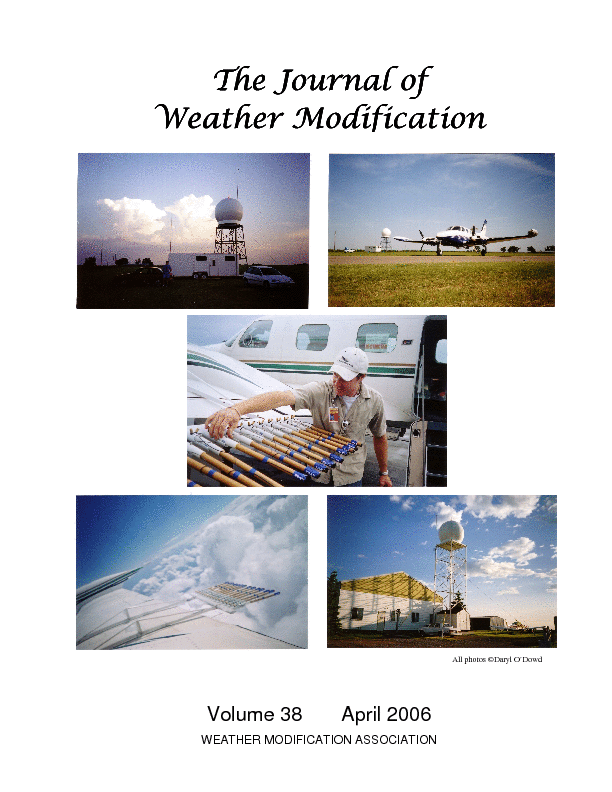A Three-Dimensional Modeling Study of Hailstorm Seeding
DOI:
https://doi.org/10.54782/jwm.v38i1.212Abstract
A three-dimensional cloud model is used to simulate transport and diffusion of an artificial ice nucleation agent in conditions of hypothetical hailstorm seeding. The microphysical parameterization use the bulk a second-moment scheme for all species. According to the beneficial competition criteria, silver iodide is directly injected andreleased into an assumed embryo formation region, between -8 degrees C and -12 degrees C isotherms and 25-45 dBZ radar reflectivity contours on line with length of 1.5 km. The results from the case study simulation have shown that agent typically has about 2-3 min to spread in the seeding zone after its activation and relatively low vertical extension of spreading from the axis of dispersion, which is less than 160 m. The agent activation leads to earlier ice initiation that causes earlier initiation of precipitation. The implication of the seeding is that cloud seeding with a 6 min time frequency contributes in registration of the maximum hailfall decrease at the ground of about 11.01%, compared to the unseeded case. The maximum rainfall increase of 25.79% and hailfall decrease of 10% is found in the experiment with 0.4 g/m initial seeding rate, 5.5 km seeding height and 10 km seeding distance, compared to the base run simulation, respectively.Downloads
Issue
Section
Scientific Papers
License
Authors that submit papers for publication agree to the Journal’s copyright and publication terms. Authors retain copyright and grant the journal right of first publication with the work simultaneously licensed under a Creative Commons Attribution License that allows others to share the work with an acknowledgement of the manuscript’s authorship and initial publication in Journal of Weather Modification. Authors are able to enter into separate, additional contractual arrangements for the non-exclusive distribution of the journal’s published version of the work (e.g., post it to an institutional repository or publish it in a book), with an acknowledgement of its initial publication in the Journal of Weather Modification. Authors are permitted to post their work online (e.g., in institutional repositories or on their website) prior to and during the submission process to encourage productive exchanges and greater citation of the published article.
Articles are published online using restricted access for the first year. After the first year, articles are made freely available online. Immediate open access for an article may be obtained by the author paying an open access fee which is in addition to the normal page changes. Authors are expected to honor a page charge in order to support publication and distribution of the journal. After the author approves the gallery formatted version for publication, the Weather Modification Association’s Secretary will invoice the corresponding author for the page charges and payment is due within 30 days.
How to Cite
A Three-Dimensional Modeling Study of Hailstorm Seeding. (2006). The Journal of Weather Modification, 38(1), 31-43. https://doi.org/10.54782/jwm.v38i1.212




